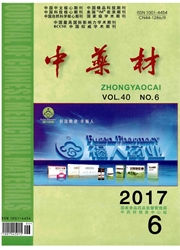

 中文摘要:
中文摘要:
目的:探讨银杏内酯N对PC12细胞缺血样损伤模型的保护作用及其机制。方法:采用组织培养法,以肾上腺嗜铬瘤克隆化细胞株(PC12)细胞为材料,制备缺糖损伤、缺氧损伤、自由基损伤、咖啡因损伤、一氧化氮(NO)损伤及谷氨酸毒性损伤模型,通过细胞形态学、细胞存活率和乳酸脱氢酶(LDH)为指标观察银杏内酯N对细胞损伤的保护作用。结果:形态学检查发现银杏内酯N对6种脑缺血样损伤模型中的PC12细胞具有明显保护作用,MTT染色提示银杏内酯N可显著提高损伤模型中PC12细胞的存活数,LDH水平表明银杏内酯N能够明显减少细胞内LDH的释放。结论:银杏内酯N对上述6种PC12细胞缺血损伤均有显著的保护作用,其作用机制可能主要针对损伤后期出现NO毒性损伤及胞内钙超载等环节。
 英文摘要:
英文摘要:
Objective: To investigate the protective effects of ginkgolide N (GN) on ischemia injury in PC12 cells models. Methods: Using tissue culture method, 6 models including hypoxia, hypoglucose, oxidant injury, calcium overload, nitric oxide neurotoxicity and glutamic acid injury were made based on PC12 cell material. Cell morphology, livability and LDH were selected as observation index of protective effect on cell injury. Results: Cell morphology assay showed ginkgolide N had a obvious protective effect on PC12 cell in 6 models of brain ischemia. MTT staining and LDH measurement also indicated that GN significantly improved the survival numbers of PC12 cells in injury model and redued LDH release. Conclusion: GN had significantly protective effect on 6 kinds of PC12 cell ischemia injury, which mechanism was related to NO toxic injury and calcium overload during later stage of injury.
 同期刊论文项目
同期刊论文项目
 同项目期刊论文
同项目期刊论文
 Neuroprotective effect of ginkgolide K on glutamate-induced cytotoxicity in PC 12 cells via inhibiti
Neuroprotective effect of ginkgolide K on glutamate-induced cytotoxicity in PC 12 cells via inhibiti 期刊信息
期刊信息
